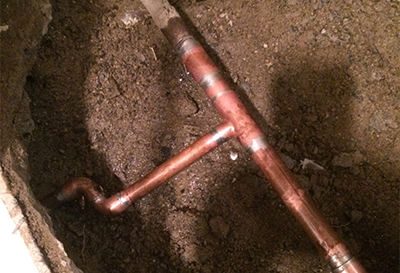6 Effective Techniques for Spotting Hidden Water Line Leaks
6 Effective Techniques for Spotting Hidden Water Line Leaks
Blog Article
Just how do you really feel on the subject of Hacks to detect leaks?

Early discovery of leaking water lines can reduce a possible calamity. Some small water leakages might not be visible.
1. Check Out the Water Meter
Every house has a water meter. Inspecting it is a surefire way that assists you find leakages. For beginners, switch off all the water sources. Guarantee nobody will certainly purge, use the faucet, shower, run the washing maker or dishwasher. From there, go to the meter and also watch if it will certainly transform. Since no one is using it, there should be no motions. That indicates a fast-moving leakage if it relocates. Similarly, if you discover no changes, wait a hr or more as well as examine back once again. This means you might have a slow leak that can also be underground.
2. Examine Water Usage
If you identify sudden changes, in spite of your usage being the exact same, it suggests that you have leaks in your plumbing system. An abrupt spike in your costs shows a fast-moving leakage.
A consistent increase every month, also with the exact same habits, reveals you have a slow leak that's additionally slowly escalating. Call a plumber to completely examine your residential or commercial property, particularly if you really feel a cozy area on your floor with piping underneath.
3. Do a Food Coloring Test
30% comes from toilets when it comes to water usage. Test to see if they are running effectively. Decrease specks of food shade in the tank and also wait 10 mins. If the shade somehow infiltrates your dish during that time without flushing, there's a leakage in between the tank as well as bowl.
4. Asses Exterior Lines
Don't neglect to inspect your outside water lines too. Must water permeate out of the link, you have a loosened rubber gasket. One little leak can throw away loads of water and also increase your water bill.
5. Inspect and Analyze the Circumstance
Home owners need to make it a behavior to examine under the sink counters and also also inside cupboards for any bad odor or mold development. These two red flags indicate a leak so prompt interest is needed. Doing regular examinations, also bi-annually, can conserve you from a significant problem.
If you know your home is already old, maintain a careful eye on your heating systems, pipes, pipelines etc. Check for stainings and also damaging as a lot of pipes and appliances have a life span. They will certainly also normally degrade as a result of tear and wear. If you think dripping water lines in your plumbing system, don't wait on it to intensify. Call a specialist plumber today so you don't wind up with a terrible mess in your home.
Early discovery of dripping water lines can minimize a possible calamity. Some little water leakages might not be visible. Checking it is a proven means that aids you uncover leakages. One little leakage can throw away tons of water and spike your water costs.
If you believe dripping water lines in your plumbing system, don't wait for it to intensify.
WARNING SIGNS OF WATER LEAKAGE BEHIND THE WALL
PERSISTENT MUSTY ODORS
As water slowly drips from a leaky pipe inside the wall, flooring and sheetrock stay damp and develop an odor similar to wet cardboard. It generates a musty smell that can help you find hidden leaks.
MOLD IN UNUSUAL AREAS
Mold usually grows in wet areas like kitchens, baths and laundry rooms. If you spot the stuff on walls or baseboards in other rooms of the house, it’s a good indicator of undetected water leaks.
STAINS THAT GROW
When mold thrives around a leaky pipe, it sometimes takes hold on the inside surface of the affected wall. A growing stain on otherwise clean sheetrock is often your sign of a hidden plumbing problem.
PEELING OR BUBBLING WALLPAPER / PAINT
This clue is easy to miss in rooms that don’t get much use. When you see wallpaper separating along seams or paint bubbling or flaking off the wall, blame sheetrock that stays wet because of an undetected leak.
BUCKLED CEILINGS AND STAINED FLOORS
If ceilings or floors in bathrooms, kitchens or laundry areas develop structural problems, don’t rule out constant damp inside the walls. Wet sheetrock can affect adjacent framing, flooring and ceilings.
https://www.servicemasterbyzaba.com/blog/how-to-detect-water-leakage-in-walls/

As a devoted reader on Detecting hidden plumbing leaks, I think sharing that excerpt was really helpful. Loved our article? Please share it. Let others locate it. Thanks a lot for taking the time to read it.
Quality-driven emergency plumbing solutions. Report this page